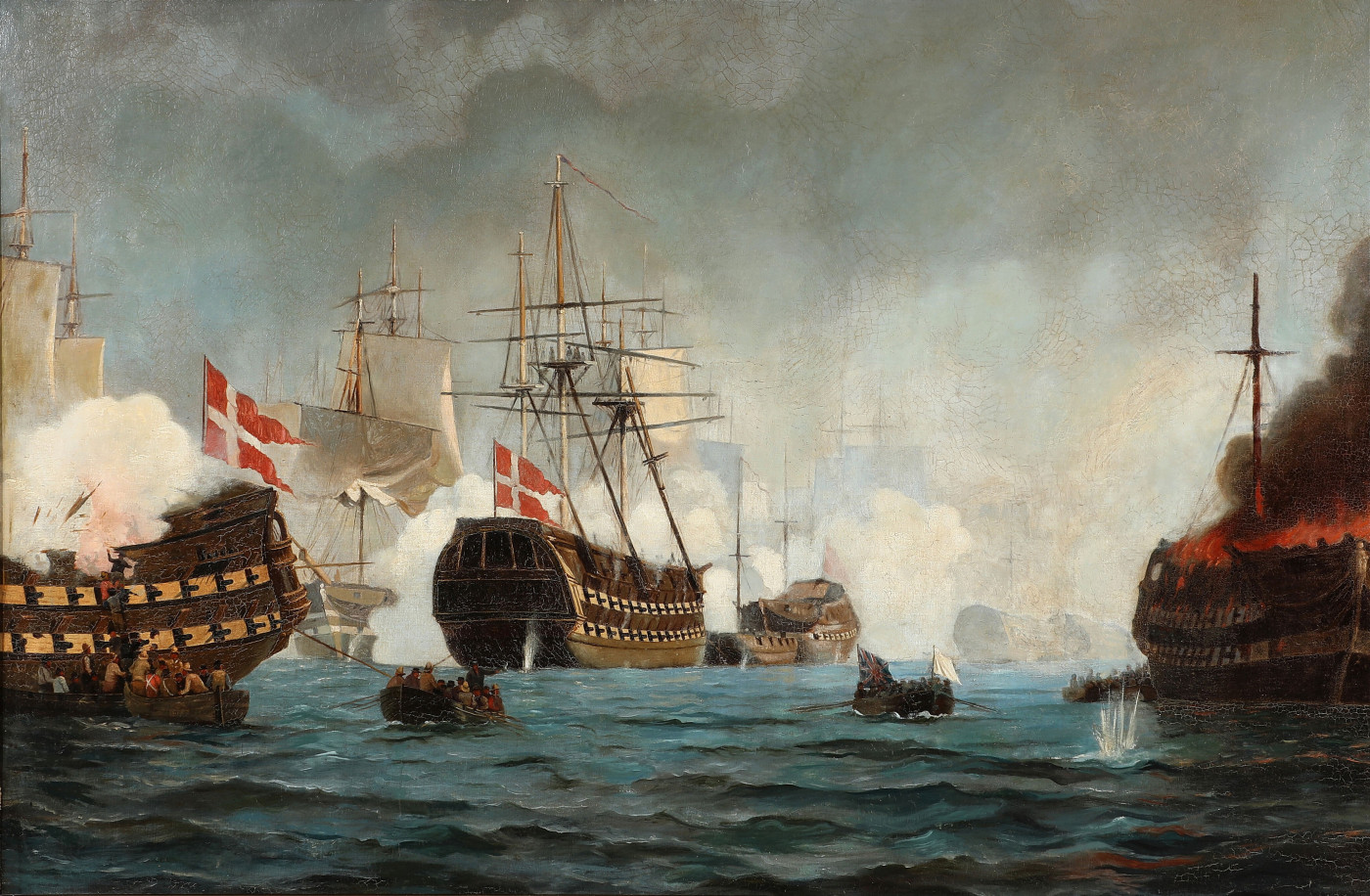This article was written for the Rewriting Women into Maritime inititative by Alex Gowans, for the Cellardyke Trust.
Mary Buick (1777-1854)
Nurse
On the eve of the Battle of Copenhagen in 1801, young Mary Buick went into labour on one of the lower decks of HMS Ardent a 64 gun third rate ship of the line. The following day she would give birth to a daughter, also called Mary, amidst the chaos and noise of a fighting ship being cleared for action.

Battle of Copenhagen, April 1801 © Christian Mølsted, Public domain, via Wikimedia Commons
The Ardent was part of the British fleet that had accompanied a delegation to Denmark in a vain attempt to negotiate a peace treaty with the Danes and their allies. The failure quickly led to a British naval attack on the city of Copenhagen in an action that Nelson would later describe as the most ferocious he had ever experienced.
Mary’s journey from her hometown of Dundee to Copenhagen can be traced back to her marriage to whaler Thomas Watson from Cellardyke in December 1797. A few months later Thomas was taken by the press gang after an epic chase and eventually “appeared” on the Ardent which at that time was moored in the south of England.
In an age when very few people travelled more than a few miles from home Mary made her way south to be closer to her husband. It must have been an arduous trip fraught with danger but the strong willed young woman was finally reunited with her husband in Yarmouth three months later. It was common practice to allow wives on board when a ship was in port and, after nature took its course, the couple’s first child John was born in April 1799.
Thomas was an experienced seaman and was quickly promoted to the position of quartermaster’s mate. Mary was allocated half of his regular wages. This allocation ended in February 1801 when she joined the ship as a nurse just as preparations were being made for a squadron of ships, including Ardent, to sail to Copenhagen. At this stage Mary was expecting their second child.
Captain Bertie of the Ardent was renowned for his innovative ideas and the care he showed to his crew. Mary’s appointment will have addressed the pressing need to provide extra help to the overworked surgeon in any expected military action.
Ardent was a ship of the line with a complement of 450 sailors and marines and Mary would have lived in very crammed and fetid conditions with little privacy. Part of her day would have been spent aiding the surgeon with his work treating regular complaints including scurvy, hernias and general fevers. In addition melancholy and depression were ever present. Mary may also have helped members of the crew with small tasks such as mending or sowing. This was the life she had chosen for herself but it was about to get a lot worse.
As dawn broke on that fateful day in early April 1801 Mary must have experienced mixed emotions. The joy of motherhood was quickly replaced by the worry that she and Thomas might not survive the day leaving their daughter, who was barely a few hours old, an orphan. Hostilities lasted five hours and Ardent was in the thick of the action suffering significant damage along with the loss of 31 sailors and 63 badly wounded. A further 40 walking wounded were patched up and returned to the fight.
Labouring alongside the surgeon Mary would have witnessed the damage a cannonball can have on the human body on board a 19th century wooden ship. The most common form of injury was severe lacerations caused by wooden splinters flying across a packed deck. Compared with today, medical science was primitive and time was short. Many of the wounded could not be saved and others were maimed for life. Mary was often the last face a dying sailor would see before succumbing to his wounds. It must have been a constant worry that her husband would be next.
Mary survived the battle along with Thomas and baby Mary. Ardent was so badly damaged she was not fit for action and required extensive repairs. Captain Bertie took over the command of HMS Bellona, replacing her former captain who had been badly wounded in the battle. He took with him the pick of his old crew including Thomas and Mary.
It was not to be the end of Mary’s adventures at sea but nothing could compare to her experiences at Copenhagen. Thomas was discharged from the navy in June 1802 after the Peace of Amiens. He returned to his hometown of Cellardyke, with his young family to begin life as a fisherman, with the added comfort of knowing he was now exempt from impressment.
Mary went on to have a large family and in later years ran an alehouse overlooking Cellardyke harbour before passing away in 1854 at the age of 77. She had led quite a remarkable life.
Back to the exhibition home page.

